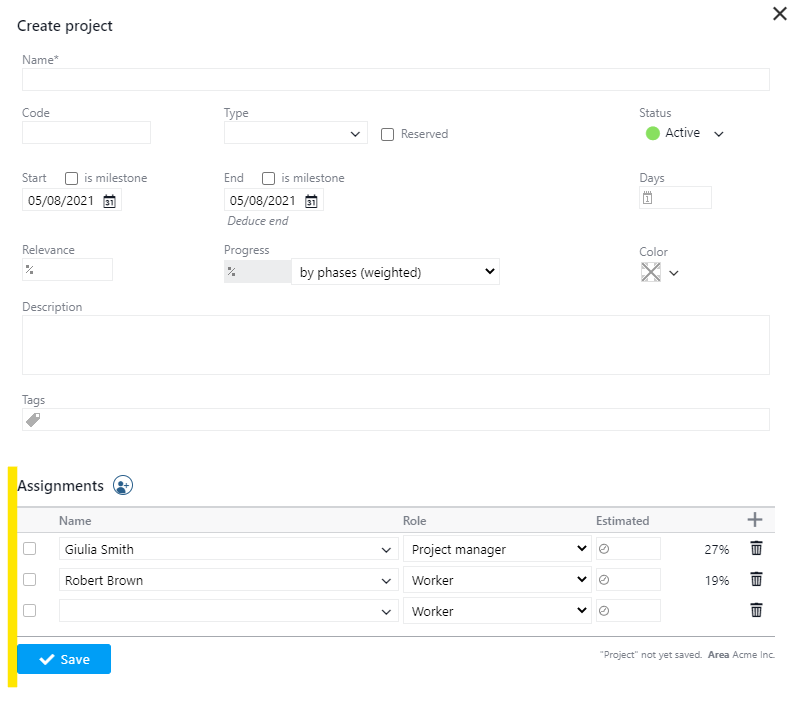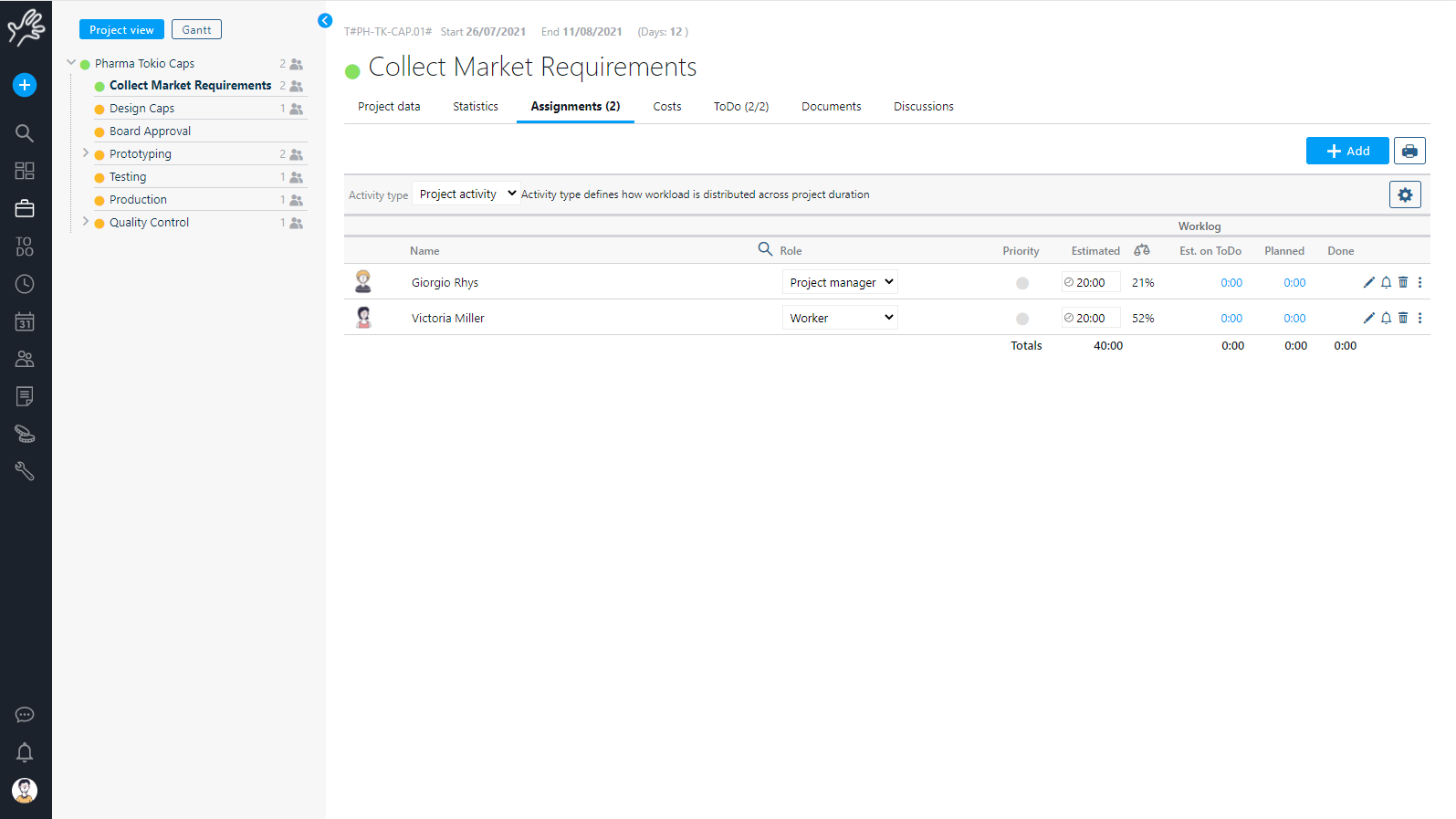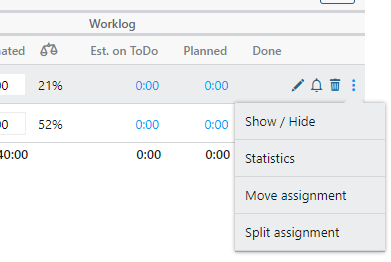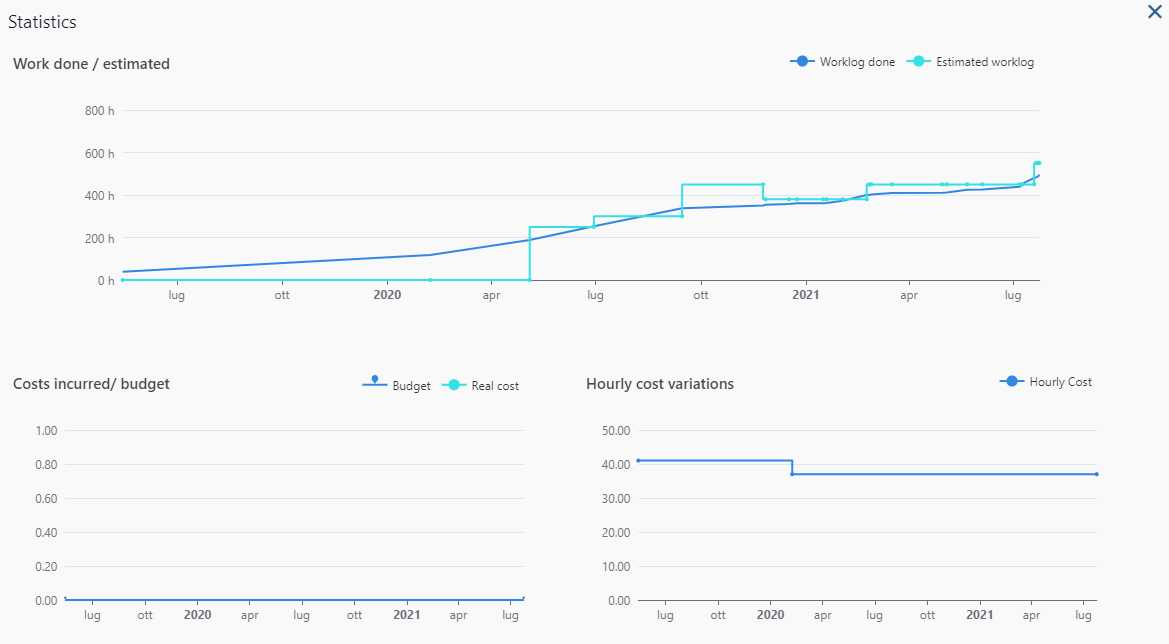While you are creating a new project, you can tell Twproject “who is working on this project” by creating one or more “assignments”

Choose the resource, the role played (project manager, customer, worker etc.) and if you already know, an estimated effort in hours.
Twproject will show you the work load of the resource chosen, to ovoid resource overloading.
If your resources are not in Twproject already, you can create new ones directly, by clicking on “add resource”:

Assignments in Twproject are very important: when you assign a resource you will also implicitly define security settings of the project. In fact every assignment is “weighted” by a “local role” that gives permissions to the assignee. Permissions are, by default, propagated to descendants, so if you are PM on the root you have PM permissions everywhere, but if you are assigned on a child you can act on the child, not on the parent. This makes Twproject security very fine-grained, without the stress of managing permissions separately.
Some basic roles are created during setup, but you can define new ones from the administration page.
Role is crucial for defining what the resource can do on a project. For all the information about security go here.
Once the assignments are created you can see the list from the project page:

From the list you can change role, priority, effort.
You see the workload for the project period, how much has been already worked or planned. You also have the estimation from ToDo.
Est. on ToDo: effective when working in an “agile” environment, and in general by ToDo (see chapter 4 ToDo ). Click on the link to see Todo on which work has been estimated.
Assignment menu

Show/hide the assignment is generally used to hide from your pages routine activity that you don’t want to see.
Statistics open a layer with all the statistics refereed to the assignments such as worklog done in time, expenses on budget and hourly cost variation in project period.

Move let you move the assignment with all the work done to a different project.
Split is used to divide the work estimation with other user.
With the pen you can edit the assignment details, with the garbage you can delete it assignment and with the bell you access notifications.
Regarding the estimation of required work, the assignment is the place where it is mostly done; it allows a very fine grained and practical estimation entry point. Notice that directly from this editor you can check the current load of the assignee and check the planned work if you are using that module.
There are three more fields that require some explanation:
Activity: this field is set for all the assignments and define how the load is distributed. Could be “Project”, “Routine” or “Spot”. Project activity means that load is distributed in project period and if not done (worklog inserted) is redistributed with time passing, they accumulate in time if not done. Routine activities instead are distributed equally for every working days in project period, they do not accumulate in time. Spot activity doesn’t require any estimation set (you can leave it to 0) and appear in resource capacity page when a new ToDo with estimation and due date is created, or value is set in plan. Estimation set on spot activity are not distributed in task period, only if planned.

Visible: in some cases a resource can have long-standing project assigned that don’t require activity for a long time. In this case you can disable the assignment (the only effect is that it will be hidden in your working pages like home page or timesheets ).
Budget: is an amount of money dedicated to the resource for expenses on this project . This budget is part of the project’one.
Hourly cost: hourly cost for the chosen resource on this assignment. By default is the value taken from the resource hourly cost editor if set. Global defaults otherwise.
The hourly rate is copied into the assignment at creation, but if you update the general price of the resource, the already existing assignments will intentionally not be updated, as you may have set that price as an exception. Our idea is that the same resource may have different costs on different assignments, as it is often the case in the real world.
Who can I assign?
Assignment can be created only if you have the right to do that, and who you see inside the combo depends on your rights as well.
According to your role you will be able to assign everyone in Twproject, your staff only or those already assigned in the tree at your same level.
If for example you are Assigned as Project manager at phase level, with a team, you will be able to create sub phases and assign your team on those.
To see how roles works in details read the security chapter.